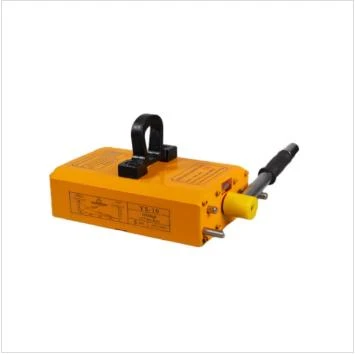1 Ton Lifting Magnet for Efficient Heavy Load Handling and Transportation Solutions
The Importance of Lifting Magnets A Focus on 1-Ton Lifting Capacity
In the realm of industrial operations, the efficiency and safety of lifting heavy loads is paramount. One of the essential tools that has significantly advanced load handling technology is the lifting magnet. Particularly, lifting magnets with a capacity of 1 ton have become increasingly popular in various sectors for their functionality and reliability. This article explores the significance, advantages, and applications of 1-ton lifting magnets in modern industrial environments.
What is a Lifting Magnet?
A lifting magnet is an electromagnetic device designed to lift and transport ferrous materials with ease. These magnets use magnetic fields to create a powerful grip on objects made of iron or other magnetic materials. When activated, a lifting magnet can securely hold the designated load until it is time to transfer it to another location, making it an indispensable tool in warehouses, manufacturing plants, and construction sites.
Why Choose a 1-Ton Lifting Magnet?
The 1-ton lifting magnet strikes an optimal balance between capacity and usability. For many operations, lifting weights of up to 1 ton is a common requirement. This makes a 1-ton lifting magnet versatile enough to handle various tasks while remaining manageable for operators. Furthermore, its size and weight ensure that it can be used in confined spaces where larger equipment may be impractical.
Advantages of Using 1-Ton Lifting Magnets
1. Efficiency Lifting magnets are designed to make the process of lifting and transporting heavy loads faster and more efficient. The magnetic grip eliminates the need for slings, chains, or other mechanical linkages, reducing the time required to set up a lift.
2. Safety Using a lifting magnet minimizes the risk associated with traditional lifting methods. The strong magnetic force ensures that loads remain securely attached until released, which reduces the likelihood of dropping or misplacing items during transport.
3. Reduced Labor Costs Automation in material handling can lead to significant savings. By utilizing a lifting magnet, businesses can decrease the number of personnel required for heavy lifting tasks, allowing employees to focus on other important responsibilities.
lifting magnet 1 ton

4. Ease of Use Lifting magnets are user-friendly tools that can be operated with minimal training. Most units come with simple on/off switches that allow operators to activate the magnetic grip quickly and efficiently.
5. Durability Made from resilient materials, 1-ton lifting magnets are built to withstand challenging industrial environments. Whether exposed to dust, moisture, or varying temperatures, quality lifting magnets can endure the rigors of everyday use.
Applications of 1-Ton Lifting Magnets
1-ton lifting magnets find applications across various industries
- Manufacturing In factories, lifting magnets are often used to move large sheets of metal, machinery parts, and more. They streamline the production process and ensure seamless material handling.
- Construction During building projects, lifting magnets facilitate the transport of steel plates and rebar, contributing to faster project completion while enhancing worksite safety.
- Warehousing These magnets allow for quick retrieval and storage of heavy goods in warehouses, optimizing space and increasing productivity during inventory management.
- Shipping and Logistics In shipping facilities, lifting magnets assist in loading and unloading of cargo, improving turnaround times and reducing the risk of damage during transportation.
Conclusion
In conclusion, 1-ton lifting magnets play a crucial role in modern industrial operations. Their ability to lift heavy loads safely and efficiently makes them a preferred choice across various industries. As technology continues to advance, we can expect further innovations in lifting magnet design, enhancing their capabilities and expanding their applications. Investing in a reliable lifting magnet can lead to improved productivity and safety, making it a worthwhile addition to any heavy-duty material handling operation.
-
Unlock Seamless Relocation with Our Heavy Equipment Moving ExpertiseNewsJun.06,2025
-
Unleash Unrivaled Flexibility with Our Adjustable Gantry CraneNewsJun.06,2025
-
Unleash Heavy-Duty Efficiency with Our Industrial Gantry Crane SolutionsNewsJun.06,2025
-
Revolutionize Steel Handling with Our Magnetic Lifter RangeNewsJun.06,2025
-
Master Equipment Mobility with Premium Machinery Mover SolutionsNewsJun.06,2025
-
Elevate Your Material Handling with Magnetic Lifter TechnologyNewsJun.06,2025
-
YS Permanent Lifting Magnets: The Smarter Way to Handle SteelNewsMay.22,2025
